
Understanding Parking Systems in Japan
Foreigners driving in Japan for the first time often encounter parking-related issues. In particular, it is well-known that parking lots in Tokyo and tourist areas are often full, making it difficult to find a spot, and that parking fees can be quite expensive. Additionally, since parking signs are entirely in Japanese, foreigners may have trouble understanding the fees or how the parking system works.
This article will explain the details of parking in Japan, so if you plan to drive here, please use it as a reference!
Types of On-Street Parking Systems in Japan
In Japan, on-street parking systems vary depending on the location and regulations. Common types include coin-operated parking meters, time-limited parking zones, and automated parking systems. These systems help manage limited parking space efficiently and ensure smooth traffic flow in urban areas.
Street Parking
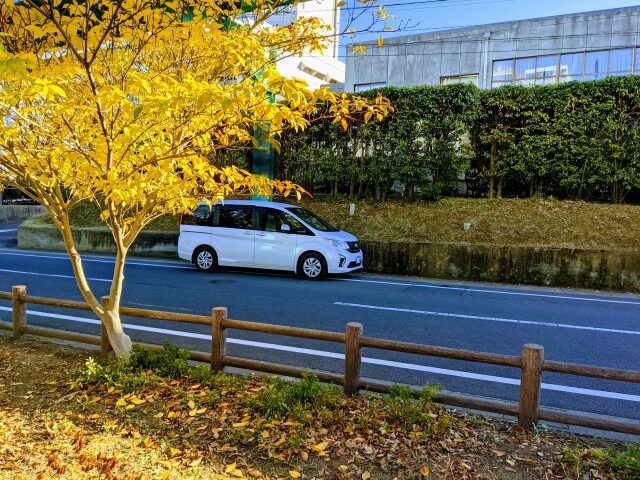
Street parking refers to continuously stopping on the road or leaving the vehicle unattended while it is parked. In Japan, in addition to the police, there are staff who patrol to enforce street parking regulations. Even if you leave your car for just one minute, a parking violation sticker may be placed on your vehicle. The driver must report to the police station and pay a fine. Even if it’s a rental car, the driver is responsible for paying the fine. For regular cars, the fine ranges from about 15,000 yen to 18,000 yen. In addition to paying the fine, you’ll have to go through various procedures at the police station, which can take several hours. Therefore, even for short stops, it’s best to use a proper parking lot.
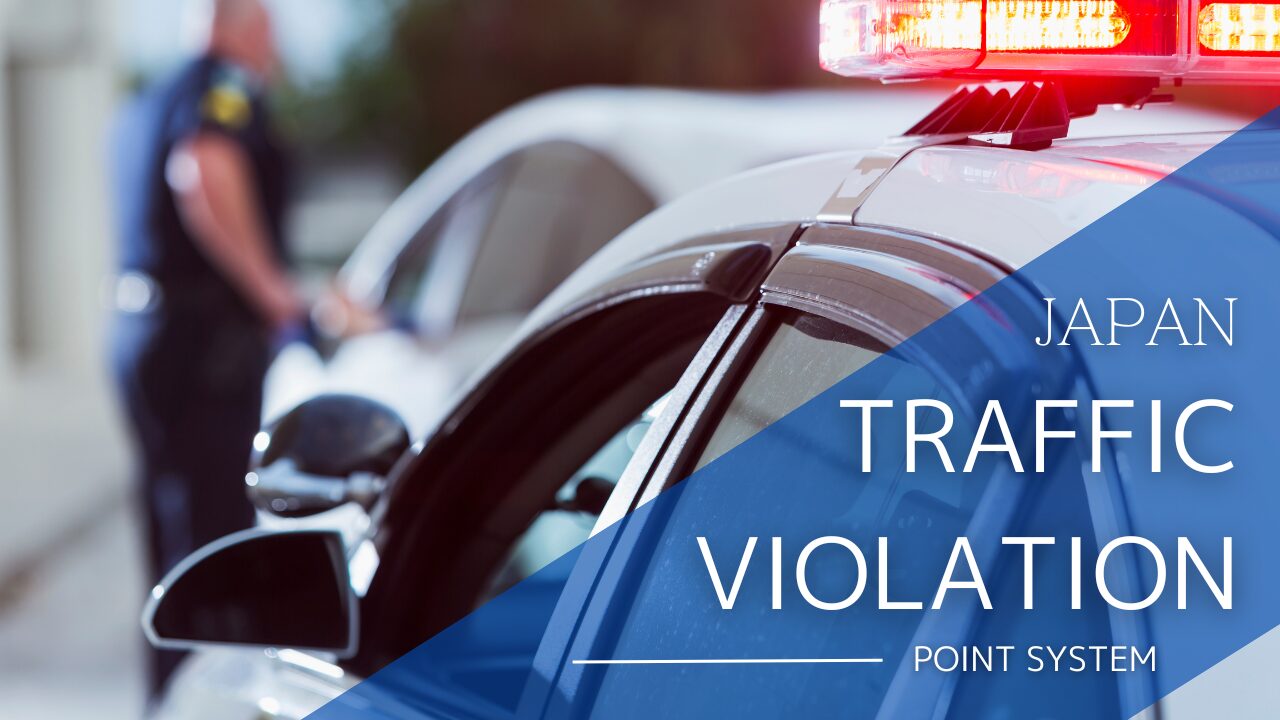
Some Streets Allow Parking
As explained above, street parking is illegal. However, in urban areas where parking lots are scarce, parking meters are sometimes installed on streets to supplement parking availability. Parking meters have a unique usage system that differs from regular coin parking, and incorrect use can result in a parking violation. Generally, parking is allowed for up to 60 minutes at a time. Parking for more than 60 minutes is considered a violation and will be treated the same as illegal parking.
How to Use a Parking Meter
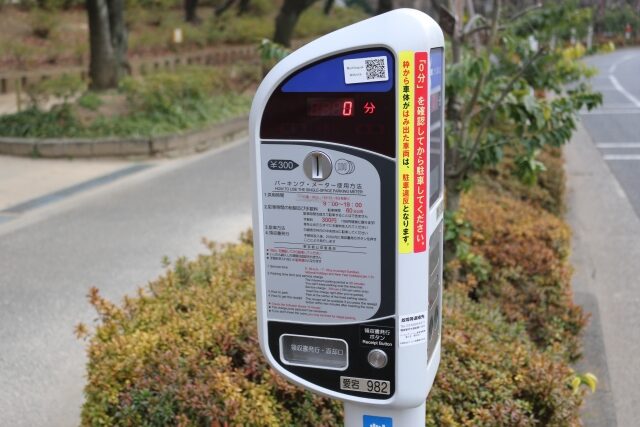
- Confirm that it is within the permissible parking hours.
- Park the car within the designated space.
- Insert the required fee into the parking meter.
How to Use a Parking Ticket
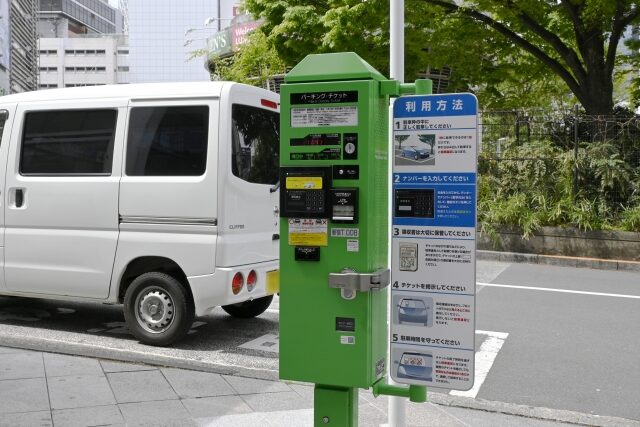
- Confirm that it is within the permissible parking hours.
- Park the car within the designated space.
- Insert the fee into the ticket machine and issue a ticket.
- Display the ticket on the inside of the windshield or another visible place from outside.
Coin-Operated Parking Systems
If you’re parking for less than 60 minutes, street parking with a fee is acceptable. However, if you’re parking for several hours or more than a day, it’s recommended to use a coin parking lot. Be cautious when using a coin parking lot as the fee displays can be unclear or misleading. You might end up parking due to an attractive fee, only to be charged unexpectedly high fees later. Moreover, most coin parking signs are written in Japanese, which can pose a significant problem for foreigners.
Coin Parking Fees
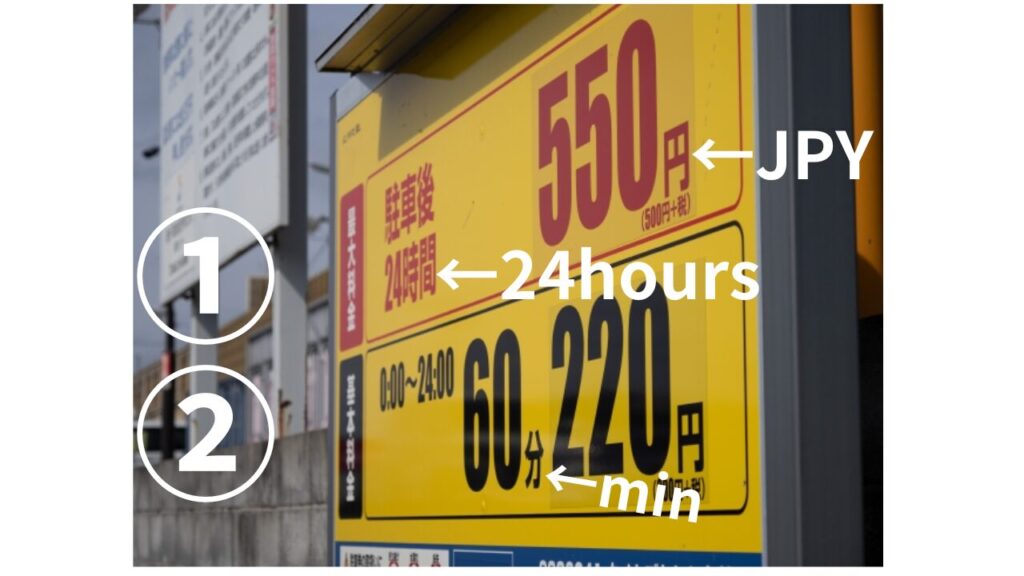
Here is an example of fees displayed in this image:
Typically, charges are calculated based on a predetermined “rate per usage time,” set in 30 or 60-minute increments. However, the fee structure can vary depending on the time of day, which means the amount you pay for the same amount of usage time can differ.
In city centers, it’s common to see signs indicating rates like “300 yen per 30 minutes during certain hours” or “a discounted rate of 100 yen per 30 minutes from 10 p.m. to 5 a.m.”
Maximum Fee
The maximum fee structure also varies by parking lot. Some parking lots set the maximum fee for 12 or 24 hours, while in city centers, the maximum fee may apply for only 3 or 4 hours.
When Maximum Fee Repeats
Let’s say you park in a lot where the maximum fee is 1,000 yen for 24 hours (with a basic fee of 300 yen per 60 minutes).
If the maximum fee is repeatedly applied, parking for 3 days would be calculated as follows:
24 hours/1,000 yen × 3 days = 3,000 yen
When Maximum Fee Does Not Repeat
Now, if you park in the same lot (1,000 yen per 24 hours, basic fee of 300 yen per 60 minutes) for 3 days but the maximum fee does not repeat, the calculation would be as follows:
First 24 hours: 1,000 yen
Remaining 48 hours: 300 yen per 60 minutes
1,000 yen + (300 yen × 48 hours) = 15,400 yen
This results in a significant difference in the total fees.
Since parking lot signs are only in Japanese, please be careful. It may be difficult to understand, but here’s how to identify whether the maximum fee repeats or not.
Maximum Fees May Not Apply to All Parking Spaces
There are times when maximum fees do not apply to all parking spaces.
For example, let’s say there are 10 parking spaces, numbered from No. 1 to No. 10.
In some cases, spaces No. 1 to No. 3 might have a maximum fee, while spaces No. 4 to No. 10 do not. This can often be seen in city centers and in areas like Kansai. Many times, parking spaces where the maximum fee applies are harder to park in. This detail is often displayed in small print, so even Japanese people may be caught off guard and end up surprised by the high parking fees.
Parking Fee Rates
The rates for coin parking vary depending on the region. There can be a significant difference even within the same prefecture, for instance, between the prefectural capital and other areas. Below are the average parking fees in major cities across Japan.
| Hokkaido, Sapporo | 400 yen ~ 600 yen per hour |
| Tokyo, Shinjuku | 600 yen ~ 1,200 yen per hour |
| Aichi, Nagoya | 300 yen ~ 600 yen per hour |
| Kyoto, Kyoto | 600 yen per hour |
| Osaka, Osaka | 600 yen ~ 1,200 yen per hour |
In central areas of Tokyo and Osaka, there are many parking lots with extremely high rates, such as 300 yen for 10 minutes with no maximum fee.
How to Pay Parking Fees
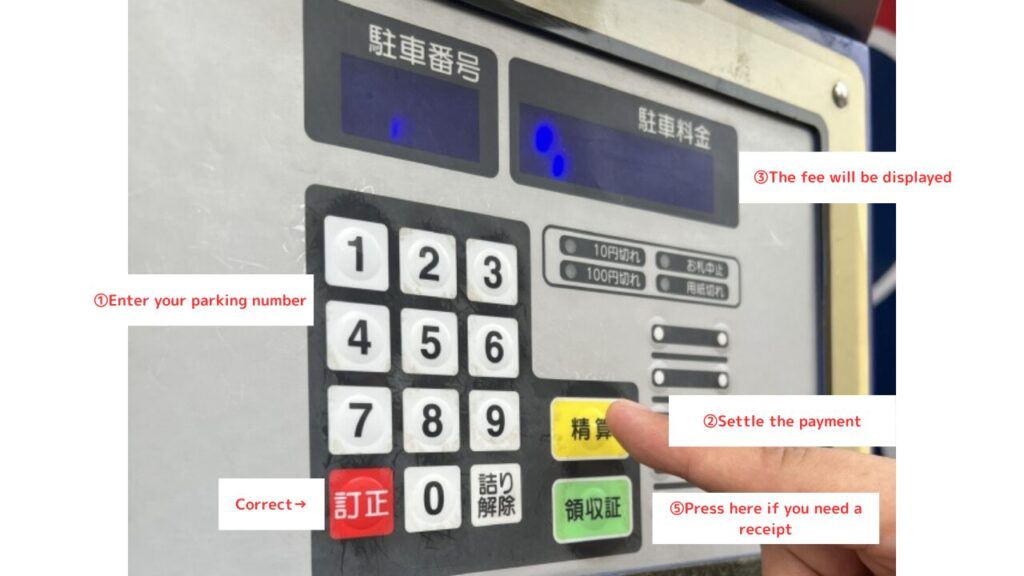
Most of the payment machines in Japan display only in Japanese. Therefore, I will explain while referring to this image.
①Enter your parking space number.
②Make the payment. (精算)
③The amount will be displayed.
④Pay using cash or credit card.
⑤Press here if you need a receipt.(領収書)
⑥Exit the parking lot promptly.
※Correct=訂正
Please note that many parking payment machines in Japan do not accept credit cards. When using coin-operated parking lots, always make sure to carry cash. Also, some machines only accept 1,000 yen bills.
Types of Coin-Operated Parking and the Machines Used
There are different types of coin-operated parking lots in Japan. Each type has a different way to park and pay. Some have locking plates under the car, some have entry and exit gates, and others use sensors. The machines used for payment are also different. Many of them are in Japanese only, so it’s good to know how they work in advance.
Locking Plate Type Coin Parking
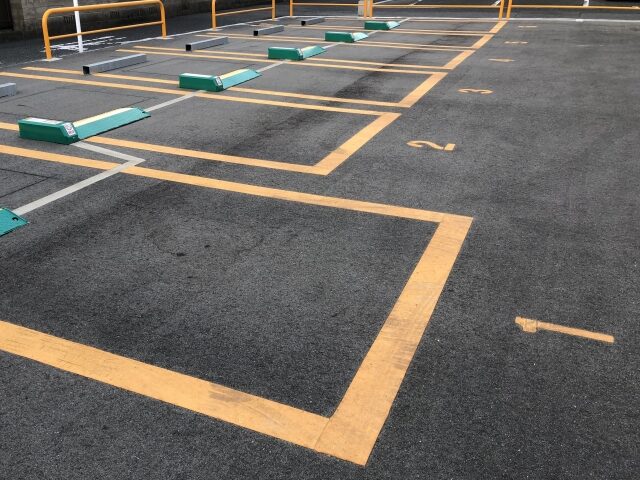
Locking Plate Type Coin Parking is the most common type in Japan.
There is a payment machine inside the parking lot. After you pay, the locking plate under the car goes down, allowing you to leave.
Gate-style Coin Parking
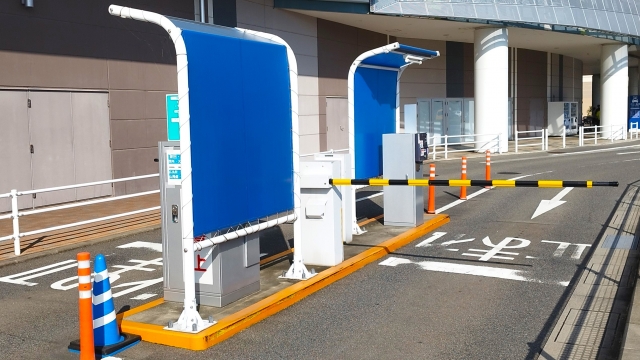
Gate-style coin parking lots have entrance and exit gates. You usually take a ticket when you enter, and pay at the machine before exiting. After payment, the exit gate (bar) will open.In larger parking lots, such as those near buildings or tourist spots, the payment machine may be located inside the building. In these cases, you pay in advance and then simply insert your ticket at the exit.
Some systems use license plate recognition, so after payment, the gate opens automatically without inserting a ticket.
Please note that some exit machines do not accept credit cards. Always carry cash just in case—especially because it can be stressful if another car is waiting behind you!
Sensor-based Coin Parking Lot
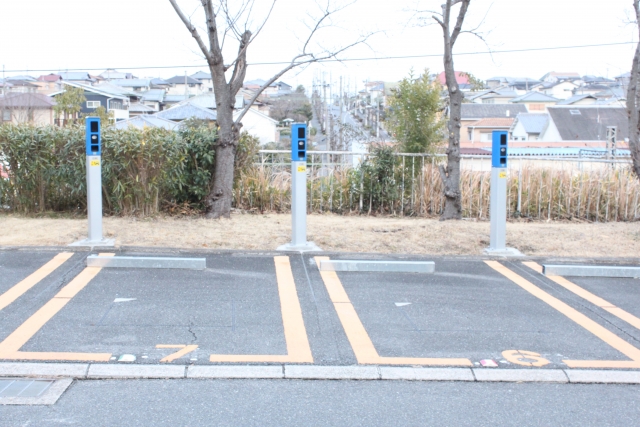
These parking lots do not use locking plates or gates. Instead, they use sensors and cameras to detect when a car enters and leaves. The system records your license plate number, and you pay at the machine before leaving. After payment, you can simply drive out.
Summary

The rates for coin parking tend to be higher in central areas of large cities, where land prices are high, and parking spaces are scarce, resulting in a significant gap compared to regional areas. The most expensive cities are Tokyo and Osaka, where rates can exceed 1,000 yen per hour at the highest. In other cities, the average rate is generally around 300 to 600 yen per hour.
Street parking regulations in Japan are very strict. Even if you’re parked illegally for just 30 seconds, you may receive a violation sticker if the timing is bad, so be sure to avoid illegal street parking. Additionally, Japan’s roads are narrow, and traffic is heavy. Illegally parked cars can block buses and trucks, potentially causing major traffic jams. In such cases, not only could you face fines for illegal parking, but you could also cause other serious problems.
Be sure to follow Japan’s traffic rules and enjoy safe driving!
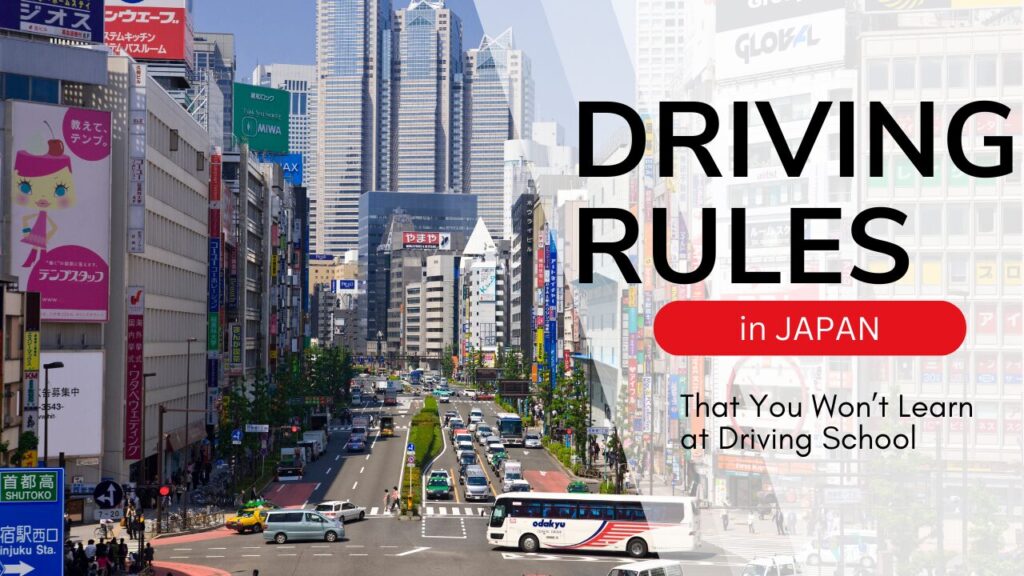



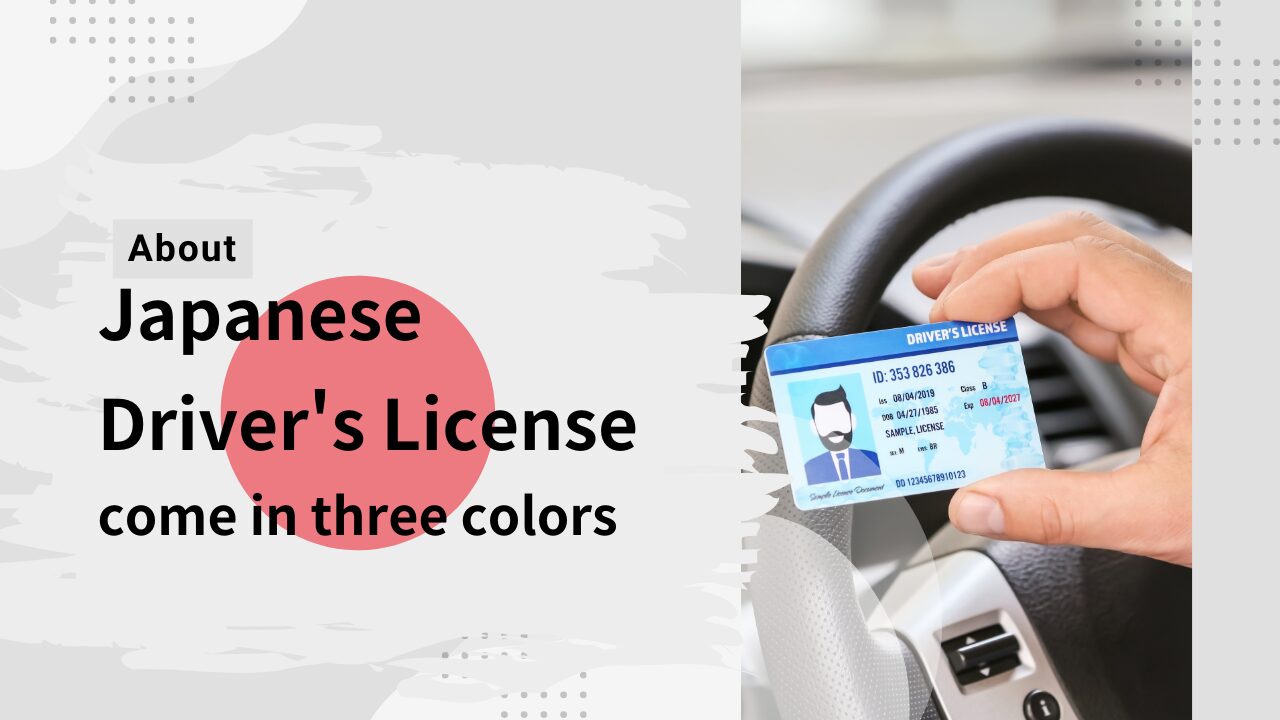

COMMENT